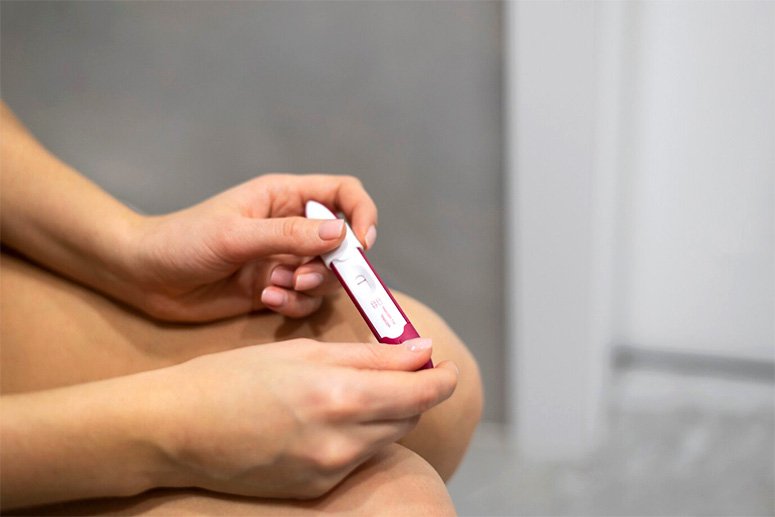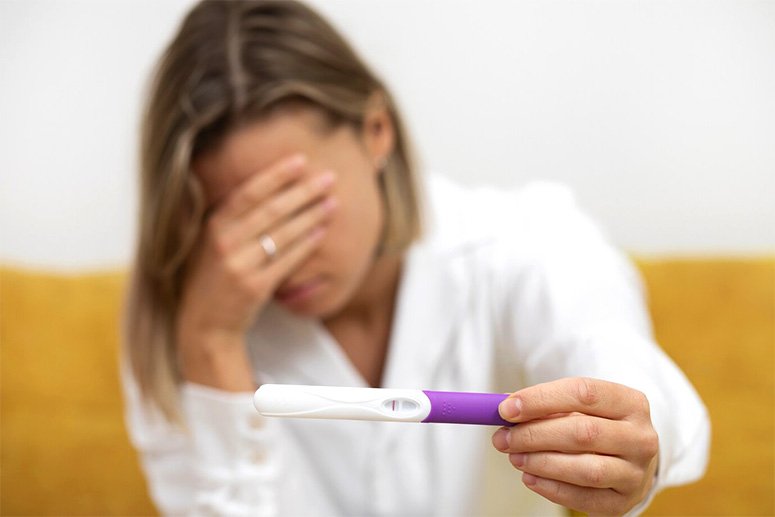Contents
Pregnancy tests are essential tools for individuals seeking to confirm a potential pregnancy – however, they encompass certain complexities that may lead to confusion.
It is vital to understand how these tests function, the various types available, and the factors that can influence their accuracy to obtain reliable results.
This article examines the likelihood of false positives and false negatives, exploring what are the odds of false positive pregnancy tests, the common causes associated with them, and strategies to enhance the reliability of the test.
Furthermore, we address the appropriate steps to take in the event of encountering a misleading result.
What is a pregnancy test?
A pregnancy test is a diagnostic instrument utilized to ascertain whether an individual is pregnant by detecting the presence of the hormone beta hCG in either urine or blood.
This hormone is produced shortly after an embryo implants into the uterine lining, thereby serving as a critical marker for the early confirmation of pregnancy.
A comprehensive understanding of the different testing methods, including home pregnancy tests and clinical assessments, enables individuals to make informed healthcare decisions concerning their reproductive health.
How do pregnancy tests work?
Pregnancy tests function by measuring the levels of the hormone human chorionic gonadotropin (hCG) in a sample, which can be obtained through either urine or blood.
The presence of this hormone, which is typically detectable around the time of a missed menstrual period, signifies a positive result for pregnancy.
The accuracy of these tests is contingent upon their sensitivity and specificity, as well as the timing of the test in relation to the expected menstrual cycle.
The detection of hCG is of paramount importance, as it is produced by the embryo shortly after implantation, indicating biochemical changes within the body.
Various brands of tests may differ in their capacity to detect low levels of this hormone, which can lead to inconsistencies in results.
As a result, false positives may occur due to factors such as recent miscarriages or certain medications, while false negatives may arise if the test is conducted too early.
Consequently, it is essential to comprehend these nuances and to interpret test results in conjunction with accompanying symptoms and medical guidance, in order to make informed decisions regarding pregnancy.
What are the types of pregnancy tests?

There are several types of pregnancy tests available, including urine tests and blood tests, each offering distinct benefits and varying levels of accuracy.
Urine tests, commonly utilized as home pregnancy tests, provide convenience and can be administered at any time. In contrast, blood tests, typically conducted in clinical settings, offer more precise measurements of human chorionic gonadotropin (hCG) levels.
Understanding the differences between these testing methods is essential for individuals to select the most appropriate option for their specific needs.
Among the various brands of pregnancy tests available on the market, some have established a reputation for higher sensitivity and specificity than others, thereby enhancing their reliability in detecting early pregnancies.
For example, certain brands claim the capability to detect hCG levels as early as six days before a missed period, while others may only provide accurate indications of pregnancy after a missed period has occurred.
The calibration of these tests is critical to their accuracy, with most home urine tests designed to yield results within a defined sensitivity range.
Furthermore, variations in technology, such as digital displays compared to traditional line indicators, can influence the ease with which results are interpreted, a factor that is particularly significant for those wishing to confirm their pregnancy promptly.
What are the odds of false positive pregnancy test?
The likelihood of a false positive pregnancy test, which occurs when the result suggests pregnancy despite the absence of it, can be affected by several factors, including the reliability of the test, error rates, and cross-reactivity with other hormones.
Although home pregnancy tests typically demonstrate a high degree of accuracy, false results may arise from improper usage, expired tests, or specific medical conditions that influence hormonal levels.
These factors can result in a potential misinterpretation of the testing outcome.
What factors can affect the accuracy of a pregnancy test?
Several factors can influence the accuracy of a pregnancy test, including the testing method employed, user error, and underlying medical conditions that may affect hormonal levels.
For example, conducting a pregnancy test too early may yield misleading results due to insufficient levels of hCG in the urine or blood. Additionally, certain medications or health conditions may impact the performance characteristics of the test.
The timing of the test is also critical – many professionals recommend using the first morning urine for optimal concentration of hCG.
Furthermore, proper sample collection techniques must be observed -inadequate handling or timing may compromise the quality of the sample and affect the results.
Users should be aware of their medical history, as conditions such as ovarian cysts or previous pregnancies can alter hormone levels, potentially leading to false negatives or positives.This raises the question – what are the odds of false positive pregnancy tests in such scenarios?
To improve testing accuracy, it is essential to meticulously adhere to the instructions provided with the test kit and consult healthcare professionals regarding any health conditions that may influence hCG levels.
What are some common causes of false positive pregnancy tests?
Common causes of false positive pregnancy tests may include factors such as a missed miscarriage, ectopic pregnancy, and hormonal fluctuations that can influence hCG levels.
In such cases, individuals may receive misleading reassurance regarding their pregnancy status, potentially delaying essential medical consultation and intervention, which could adversely affect their reproductive health outcomes.
Certain medical conditions, including ovarian cysts and specific types of cancer, can result in elevated hormone levels, leading to inaccurate test results.
These situations emphasize the critical importance of seeking professional medical advice when confronted with unexpected or ambiguous test outcomes.
The psychological impact of a false positive result can be profound, resulting in emotional distress, anxiety, and confusion regarding one’s health status. Individuals may find themselves anticipating significant life changes, only to face disappointing news later on.
Understanding the limitations of pregnancy tests, including what are the odds of false positive pregnancy test (or negative) might be, is crucial for knowledge-based decision-making. This awareness promotes timely consultations with healthcare professionals, ensuring accurate diagnoses and effective management strategies.
What are the odds of a false negative pregnancy test?

A false negative pregnancy test transpires when the test does not detect pregnancy despite the presence of human chorionic gonadotropin (hCG) in the body.
This situation can arise due to various factors, including the timing of the test and the detection window.
Administering a test too early, particularly prior to a missed menstrual period, may result in inaccurate outcomes, potentially leading individuals to disregard the possibility of pregnancy and subsequently delay essential medical attention.
What factors can affect the accuracy of a pregnancy test?
The accuracy of a pregnancy test can be significantly influenced by user error and the method of sample collection, which are critical factors in obtaining reliable results.
Proper adherence to test instructions and an understanding of the optimal timing for conducting the test are essential to minimize the risk of inaccuracies, ensuring that health considerations are adequately addressed in the testing process.
For example, if an individual collects a sample improperly by not following the recommended guidelines, such as the appropriate time of day for urine collection, it may result in misleading outcomes.
Additionally, neglecting the specified waiting period before interpreting the results may distort the findings.
To mitigate such errors, individuals should familiarize themselves with the testing device and its requirements, as well as consult healthcare providers regarding any medications or conditions that could potentially interfere with the test.
Ultimately, being well-informed can significantly enhance the reliability of results, thereby promoting more informed health decisions.
What are some common causes of false negative pregnancy tests?
Common causes of false negative pregnancy tests often arise from testing too early, hormonal fluctuations, or inadequate testing methods that fail to detect low levels of human chorionic gonadotropin (hCG).
Individuals who experience a missed period may still receive negative results, potentially overlooking early signs of pregnancy due to the timing of their test.
The complexity of hormonal changes during the menstrual cycle can significantly contribute to these misleading outcomes.
It is essential to recognize that variations in hormone levels can impact test accuracy, indicating that certain testing methods may not be sensitive enough to detect the initial rise in hCG.
Follow-up testing is critical, particularly if symptoms suggest a possible pregnancy despite negative results.
Consulting healthcare professionals can offer valuable insights and facilitate comprehensive assessments, ensuring that any potential pregnancy is accurately evaluated and managed.
Awareness of these factors is vital in preventing unnecessary confusion and promoting informed health decisions.
How can you improve the accuracy of a pregnancy test?
Enhancing the accuracy of a pregnancy test requires strict adherence to established testing protocols, a comprehensive understanding of the timing of the test in relation to pregnancy symptoms, and meticulous compliance with the provided instructions.
By conducting the test at the optimal time, individuals can greatly improve the likelihood of obtaining reliable results and effectively monitoring their health.
When is the best time to take a pregnancy test?
The optimal time to conduct a pregnancy test is generally after a missed period, as this allows adequate time for human chorionic gonadotropin (hCG) levels to increase to detectable levels.
Testing too early may yield inaccurate results due to limitations in the detection window – therefore, it is imperative to consider one’s menstrual cycle and health factors prior to testing.
Monitoring the menstrual cycle can offer valuable insights into the appropriate timing for testing, as ovulation typically occurs approximately 14 days before the onset of menstruation.
For individuals utilizing home pregnancy tests, it is recommended to wait several days beyond the missed period to achieve more reliable results.
Clinical tests can facilitate earlier detection due to their heightened sensitivity – however, the timing should still align with individual hCG levels.
A comprehensive understanding of one’s menstrual cycle and its regularity can significantly enhance the accuracy of testing, enabling individuals to make informed decisions regarding their reproductive health.
What are some tips for taking a pregnancy test?
To obtain the most accurate results when conducting a pregnancy test, it is imperative to adhere strictly to the test instructions, minimize user error, and utilize reputable testing methods.
Employing simple practices such as using first morning urine and verifying the expiration date of the test can significantly improve the reliability of the results.
It is important to acknowledge that hormonal fluctuations or incorrect timing may lead to misleading outcomes.
Users are advised to perform the test at least one week after a missed period to ensure the most accurate indications and to avoid testing prematurely, which can lead to false negatives.
Interpreting the results necessitates careful consideration of the instructions, particularly regarding the appropriate waiting time before reading the test and the criteria for a positive result.
Additionally, maintaining a record of cycle dates and being attuned to individual body signals can assist users in approaching testing with increased confidence and accuracy.
What should you do if you get a false positive or negative pregnancy test?

In case of receiving a false positive or false negative pregnancy test result, it is imperative to take prompt action to reassess your situation and seek medical consultation.
Such results can create confusion and uncertainty regarding your pregnancy status, underscoring the significance of understanding the reliability of the tests and making informed healthcare decisions.
When should you consult a doctor?
Consultation with a medical professional is strongly recommended in instances of false positive or negative pregnancy tests, particularly when persistent pregnancy symptoms or other health concerns are present.
Knowing what are the odds of false positive pregnancy test can help set realistic expectations and highlight the importance of professional evaluation when symptoms persist despite test results.
Professional medical guidance can elucidate the situation and ensure that appropriate follow-up testing or evaluation of any underlying conditions affecting pregnancy confirmation is conducted.
Individuals experiencing ongoing symptoms such as nausea, fatigue, or unusual abdominal pain should seek the expertise of a healthcare professional to rule out potential issues, including hormonal imbalances or ectopic pregnancies.
Understanding these symptoms within the framework of reproductive health is vital for effective management and can facilitate timely interventions when necessary.
Accurate assessments typically include a comprehensive medical history, physical examinations, and potentially imaging or blood tests, all of which are essential for confirming pregnancy or addressing any complications that may arise.
The support provided during this process is crucial, offering not only medical expertise but also reassurance as individuals navigate the complexities of reproductive health.
What are the next steps for confirming pregnancy?
To confirm pregnancy after receiving a false positive or negative result, the recommended next steps typically involve consulting a medical professional and potentially undergoing follow-up testing to accurately measure human chorionic gonadotropin (hCG) levels.
This process serves to clarify the individual’s pregnancy status and ensure that any necessary medical interventions are timely and appropriate.
One common question is, “What are the odds of false positive pregnancy test (or negative)” Understanding the likelihood of such occurrences can provide some context and help in evaluating initial test results.
During this stage, healthcare providers may suggest a blood test, as it can detect lower levels of hCG that home pregnancy tests might overlook.
Subsequently, an ultrasound evaluation may be conducted to not only confirm the presence of a gestational sac but also to assess the overall condition of the pregnancy.
Monitoring hormonal levels is essential, as fluctuating hCG levels can indicate potential risks or complications.
Throughout this process, the role of healthcare professionals is crucial in guiding individuals, providing reassurance, and ensuring that all aspects of reproductive health are comprehensively addressed, thus facilitating optimal prenatal care.
You can read our FAQ of what are the odds of false positive pregnancy test (or negative one) a little bit down on the page.
Explore the fascinating world of probabilities and rare events. Satisfy your curiosity and uncover more intriguing topics at WhatAreTheOddsOf.NET.



